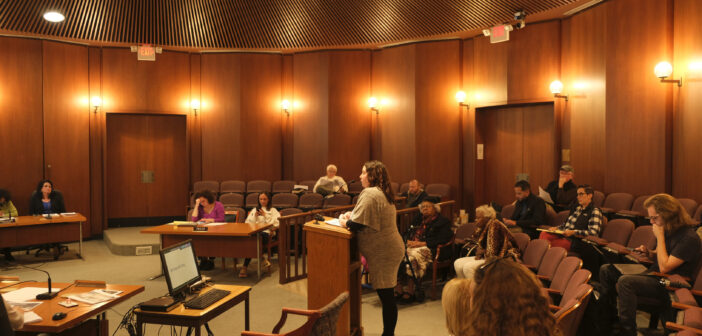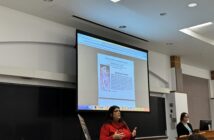A finalized strategic plan to address local homelessness was presented by Bethlehem’s Department of Community and Economic Development at the Bethlehem City Council meeting on Oct. 18.
The City of Bethlehem embarked on a study nearly a year ago to determine how to build the Lehigh Valley’s first year-round emergency homeless shelter.
Since 2020, there has been a 26% increase in households experiencing homelessness and a 36% increase in the number of people experiencing homelessness.
Sara Satullo, Bethlehem’s deputy director of community development, said she and her colleagues have devoted countless hours to creating the plan.
“The goal of this plan is to address critical gaps in the continuum of homelessness services which intersect directly with our ongoing work on affordable housing,” Satullo said.
The plan will create Bethlehem’s first year-round homeless shelter, consisting of 50 to 70 single rooms, four family units and 10 congregate-setting emergency beds. The shelter will also include a commercial kitchen, lockers for storage and a drop-in center that will be accessible during the day.
Esther Lee, president of Bethlehem’s NAACP chapter, said she has devoted the majority of her career to addressing homelessness in Bethlehem.
“The city belongs to the residents,” Lee said.
Satullo said homelessness and housing insecurity are urgent issues that require action.
“We believe that we have a moral obligation to ensure that none of our unsheltered neighbors die from exposure in the cold,” Satullo said.
Bethlehem Emergency Services currently has one cold weather shelter located at Christ Church UCC on East Market Street. The location recently went up for sale.
Satullo said part of the reason Bethlehem launched this study is because of Bethlehem Emergency Services’ uncertain future at its current location.
Expenses for the proposed shelter are projected to be $1.4 million, which would be funded by American Rescue Plan funding and the city’s budget, which includes post-pandemic resources.
Lara Collins, Bethlehem’s director of community and economic development, said the city needs to be investing in affordable housing policies and programs to make sure more people can transition out of homelessness.
Since March, the city has been working with Michael Baker International and its public finance team to determine the estimated costs for the construction of the shelter and maintenance and operation fees.
“We have a once in a lifetime opportunity right now with the pandemic recovery dollars, and also such a strong commitment from the administration and the support of the City Council to make real contributions in this space,” Collins said.
Bethlehem citizen Bruce Haines, ‘67, said he has some concerns about the plan. His main concerns stemmed from the plan’s goal of addressing homelessness throughout the entire county, while only planning on providing 50 to 70 rooms in the shelter.
“Is it really the right thing for Bethlehem to become the focal point to take care of the homeless?” Haines said. “If you’re going to build a homeless shelter, how do you not become the basic entity that attracts the homeless from other … counties?”
There will be a public hearing at the Nov. 1 City Council meeting to discuss the funding proposal.






Comment policy
Comments posted to The Brown and White website are reviewed by a moderator before being approved. Incendiary speech or harassing language, including comments targeted at individuals, may be deemed unacceptable and not published. Spam and other soliciting will also be declined.
The Brown and White also reserves the right to not publish entirely anonymous comments.